
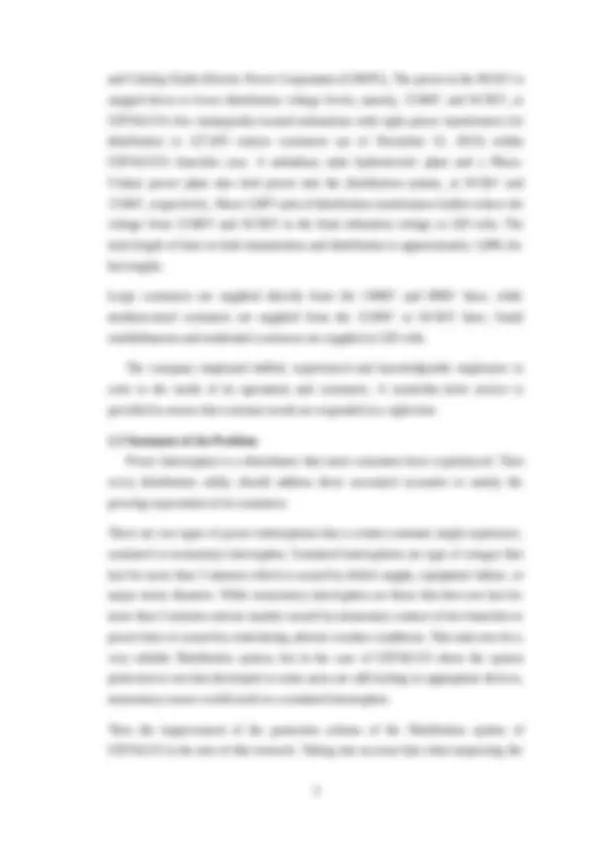
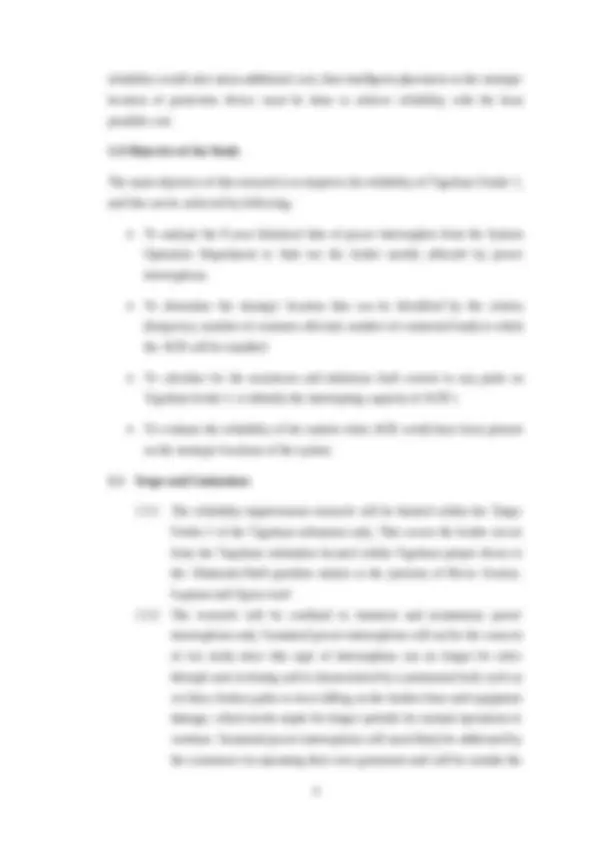

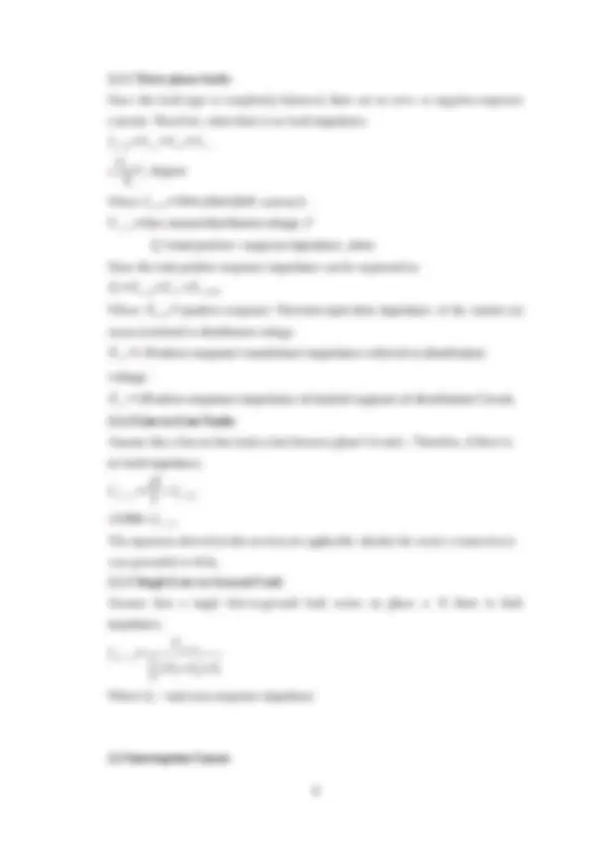
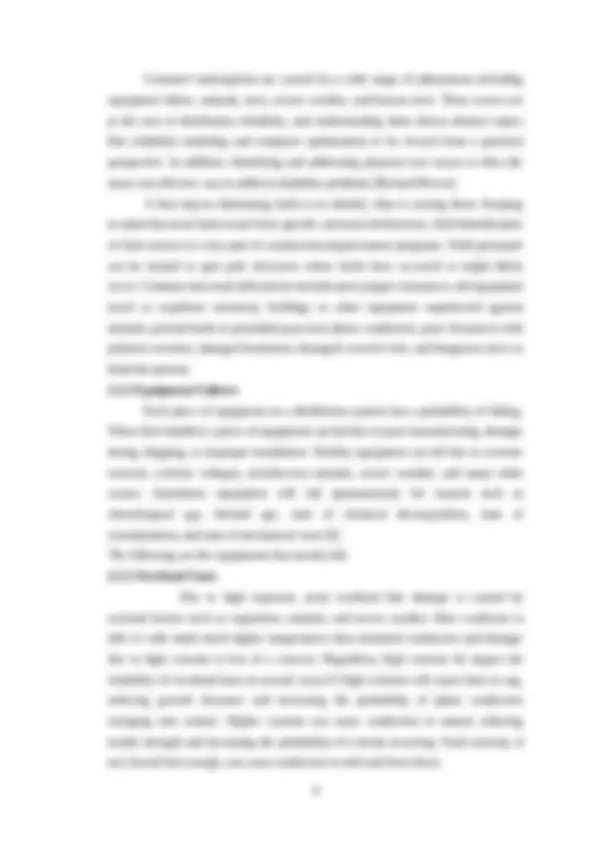

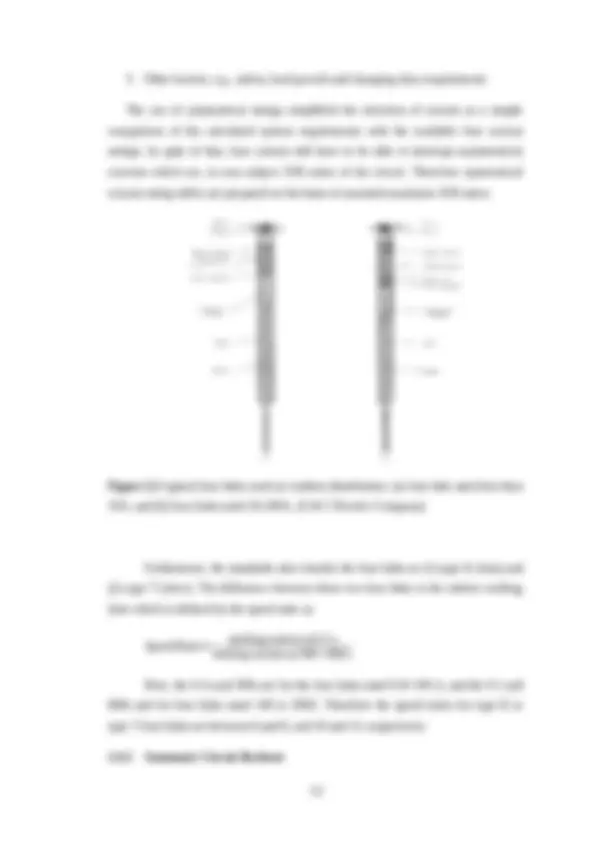
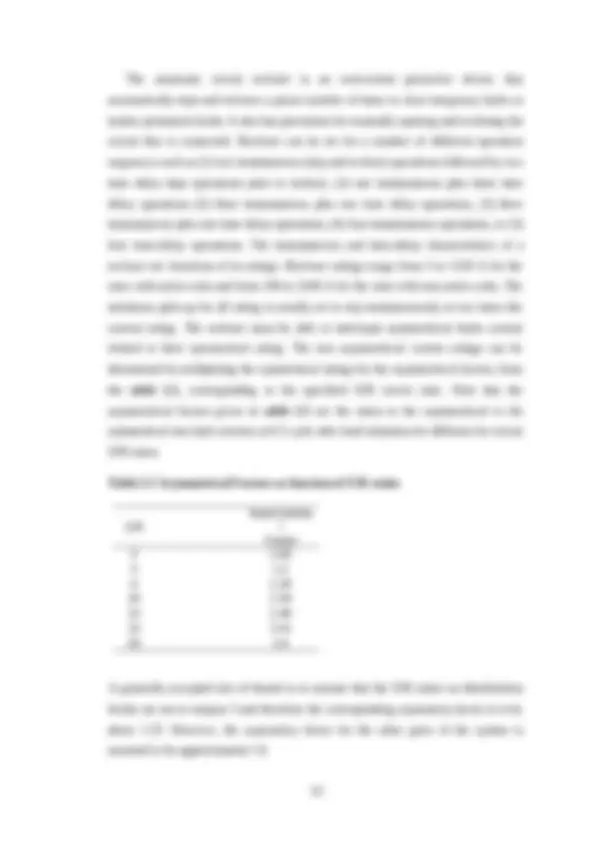

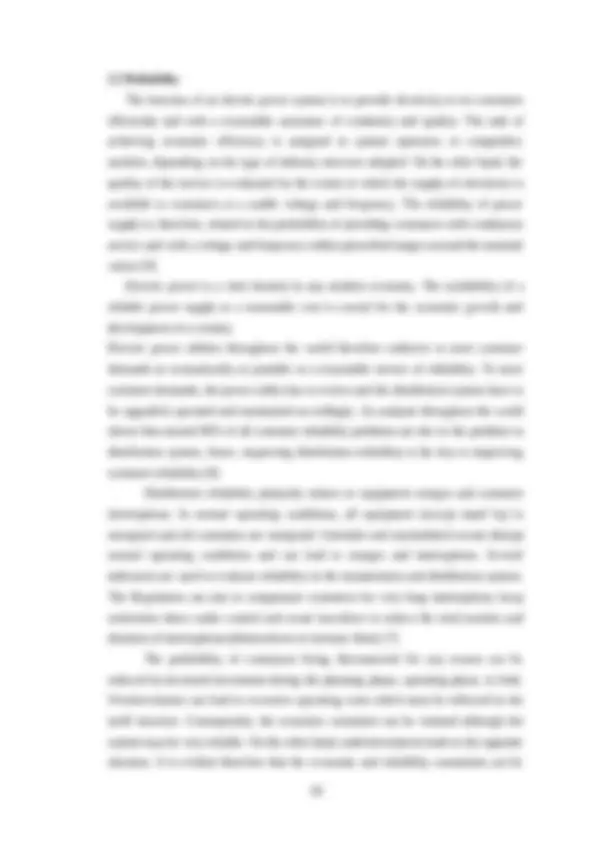
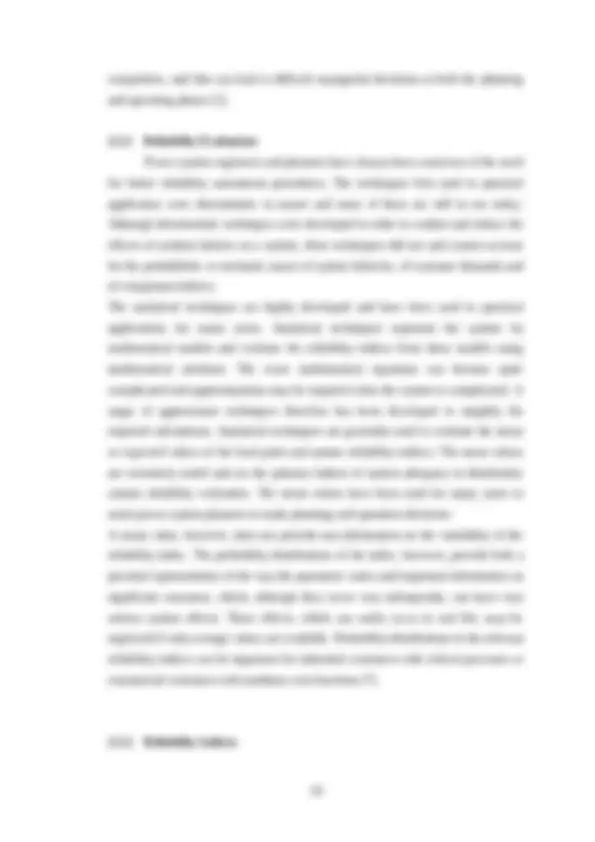

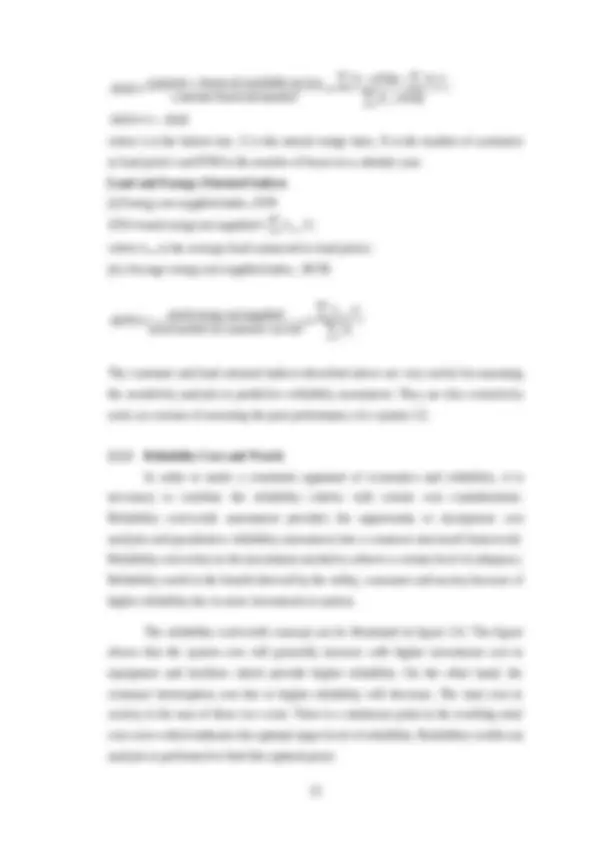

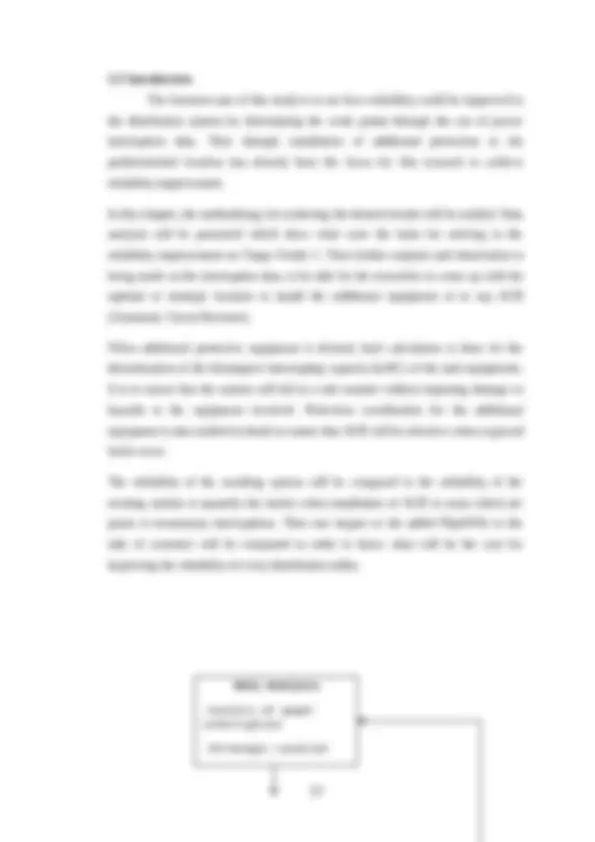
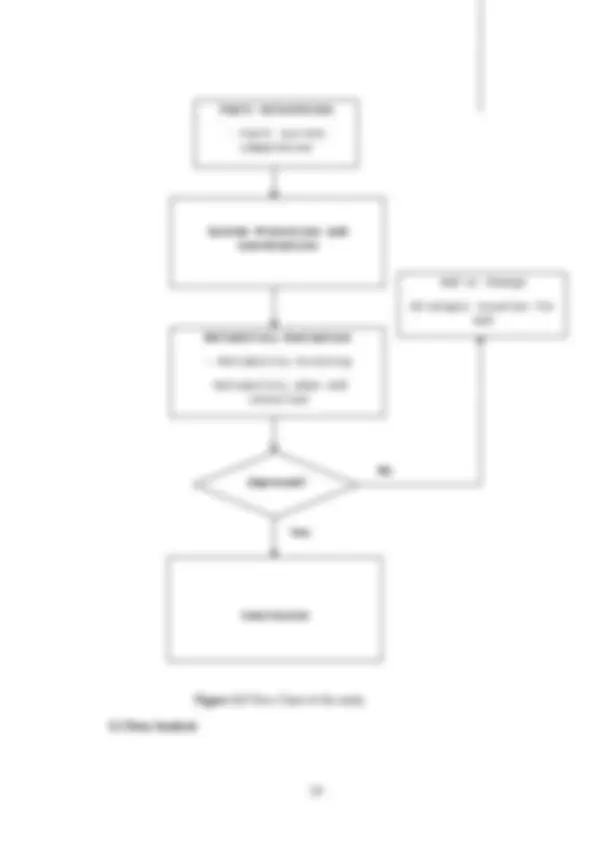
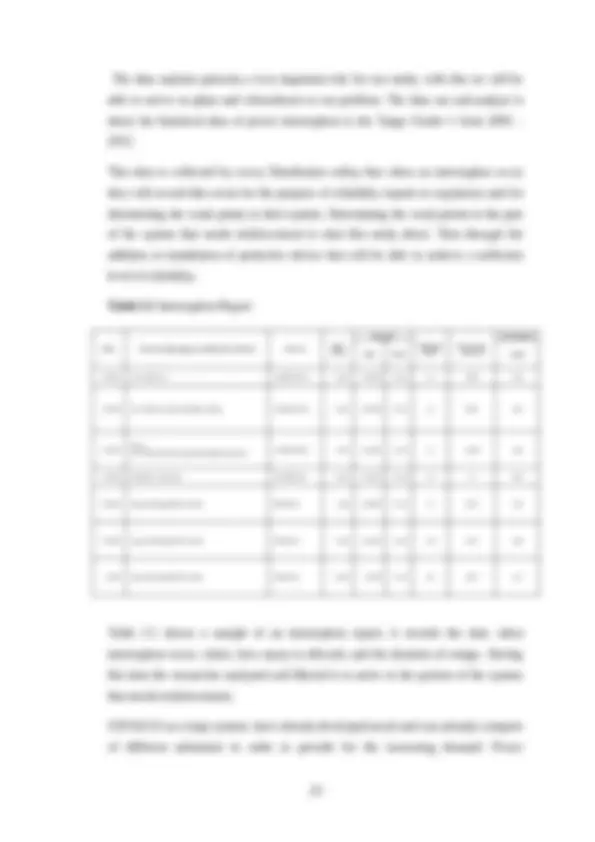
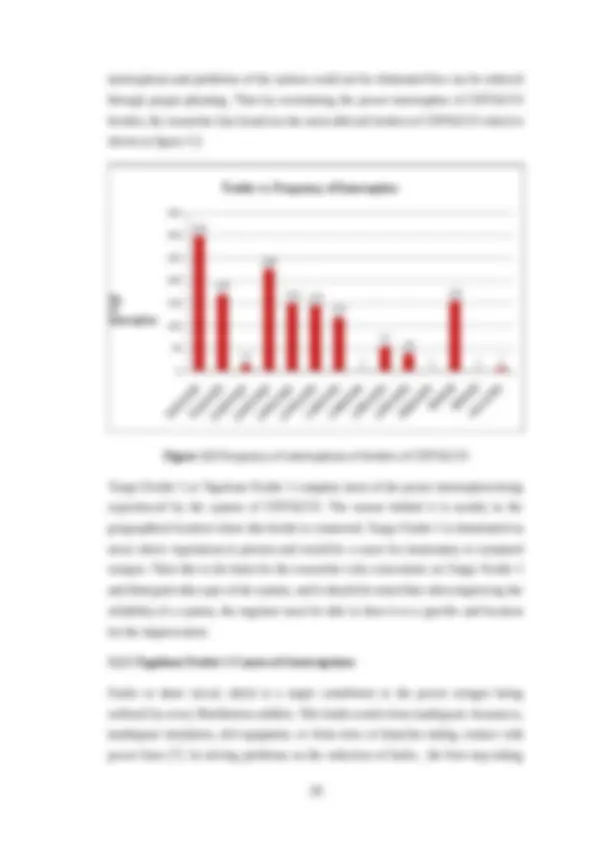
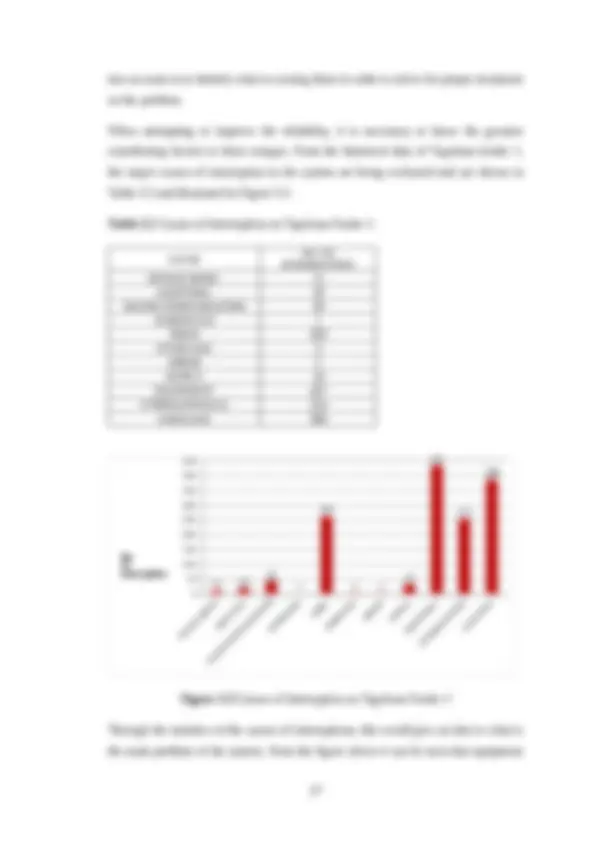

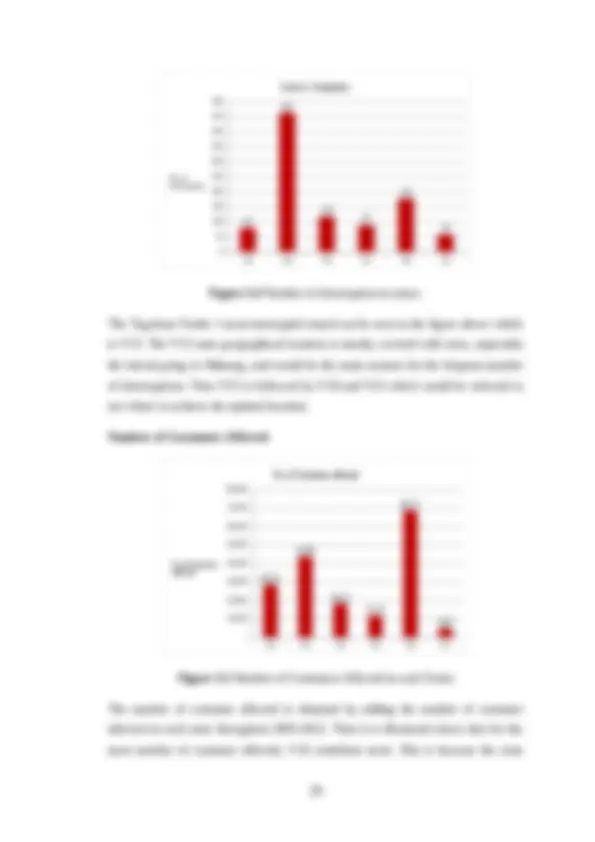

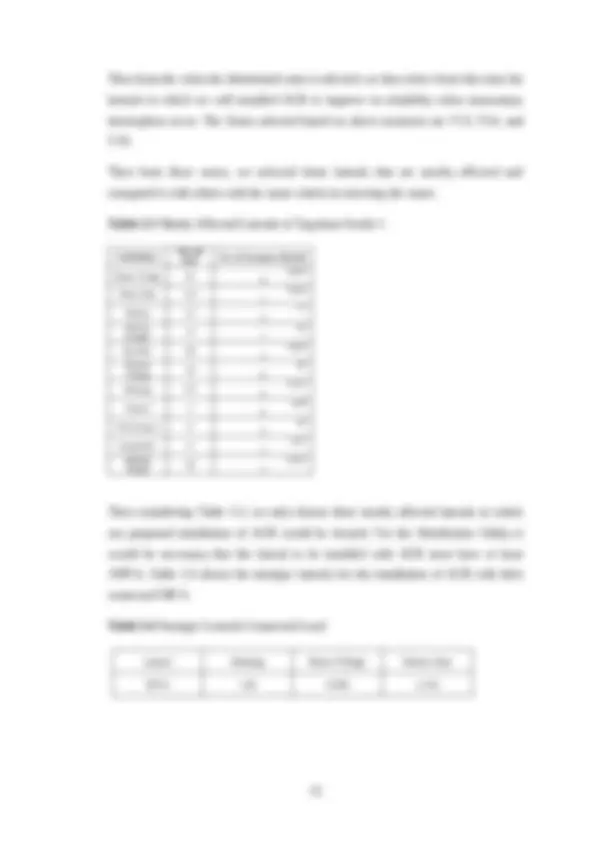
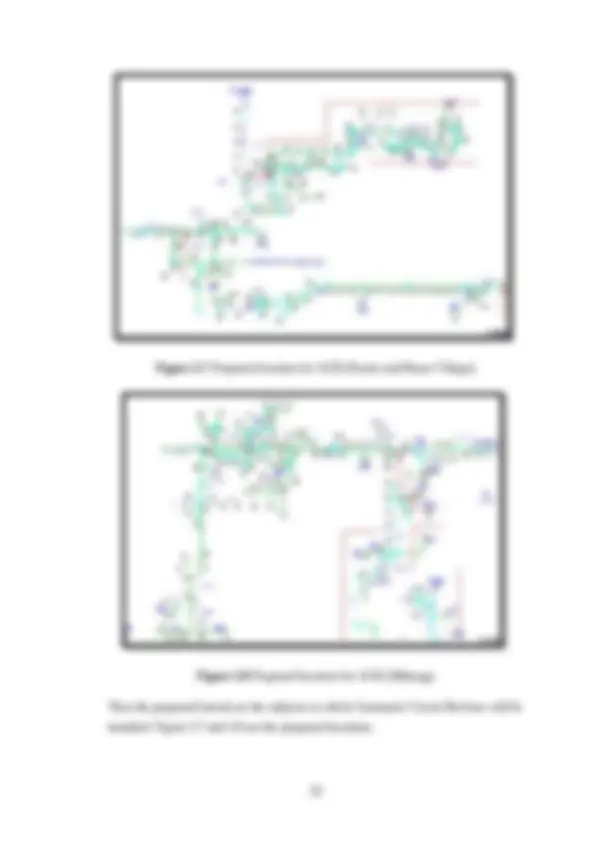

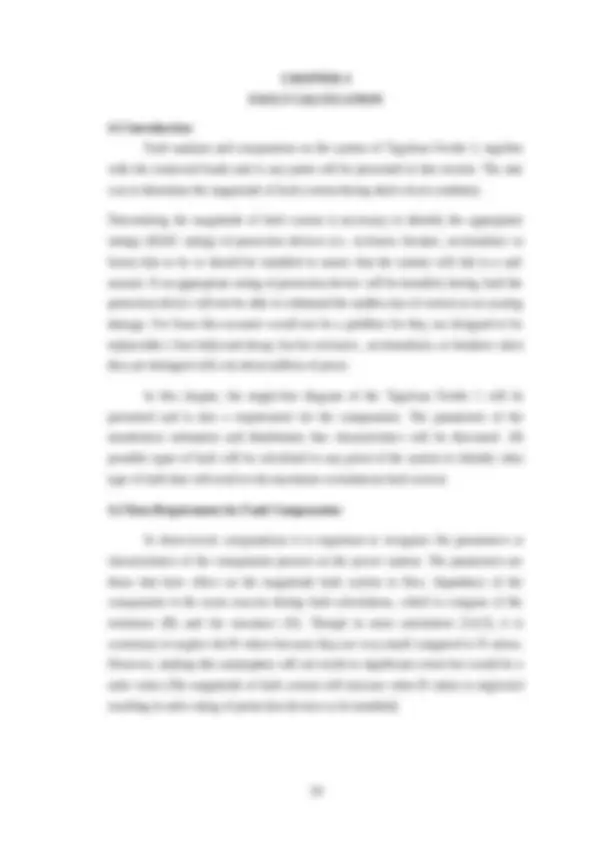
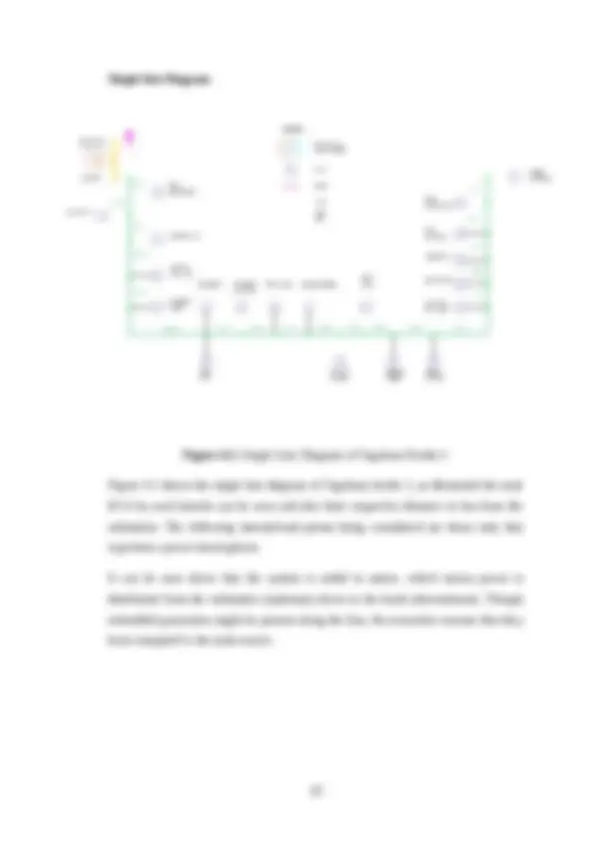
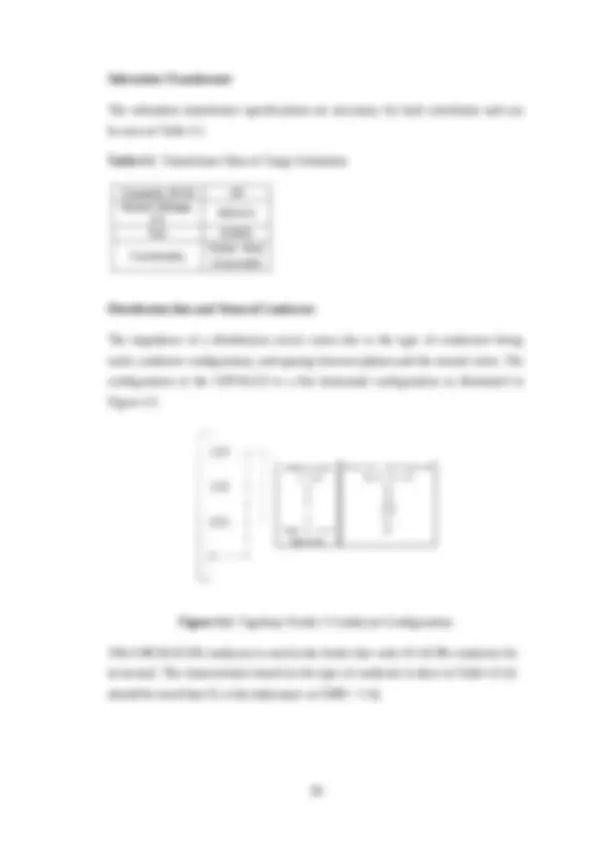
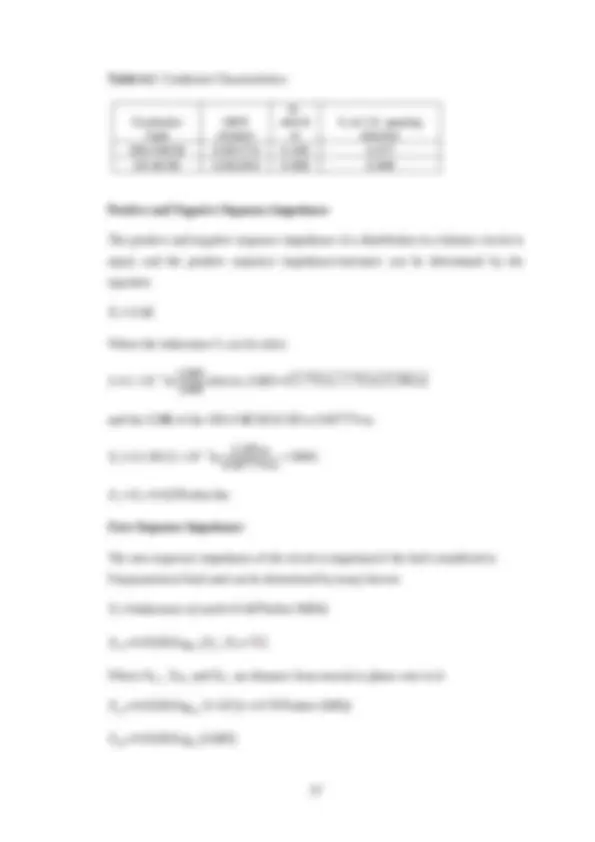
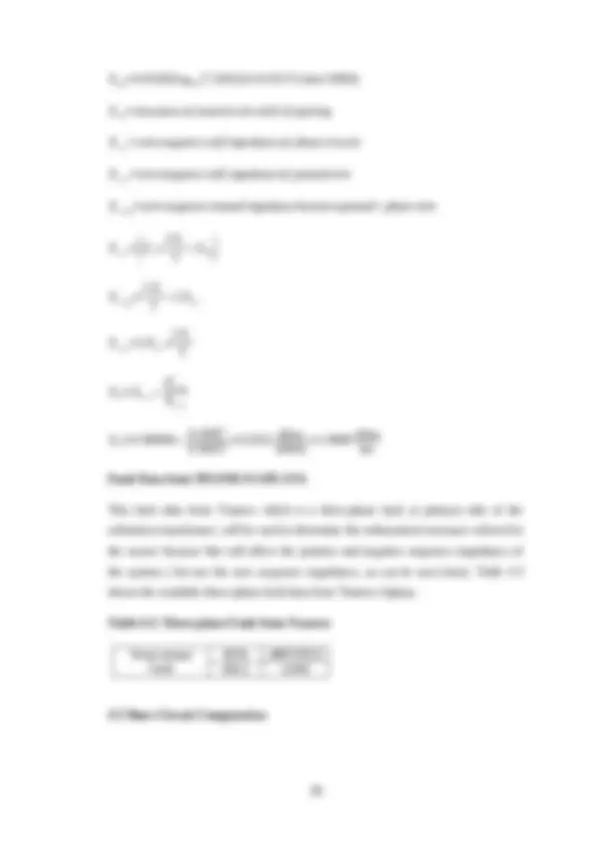
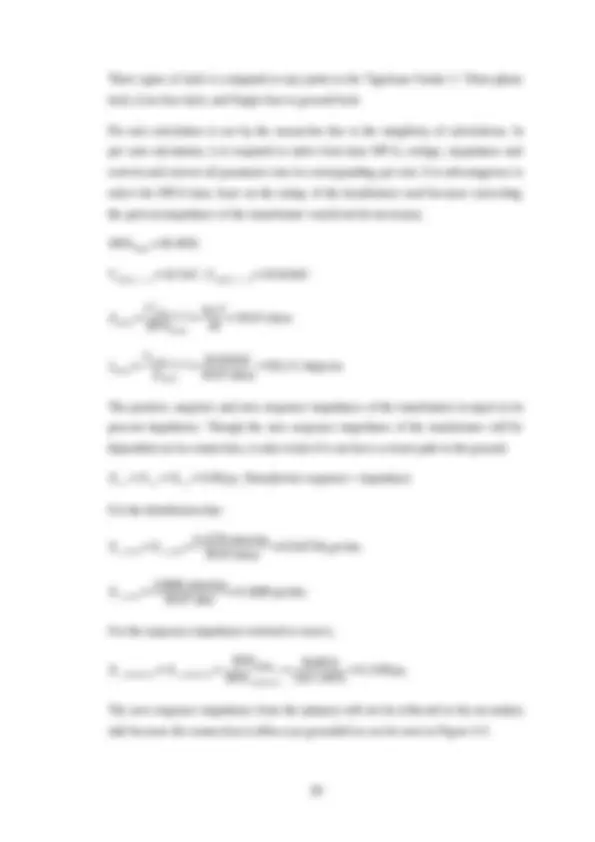
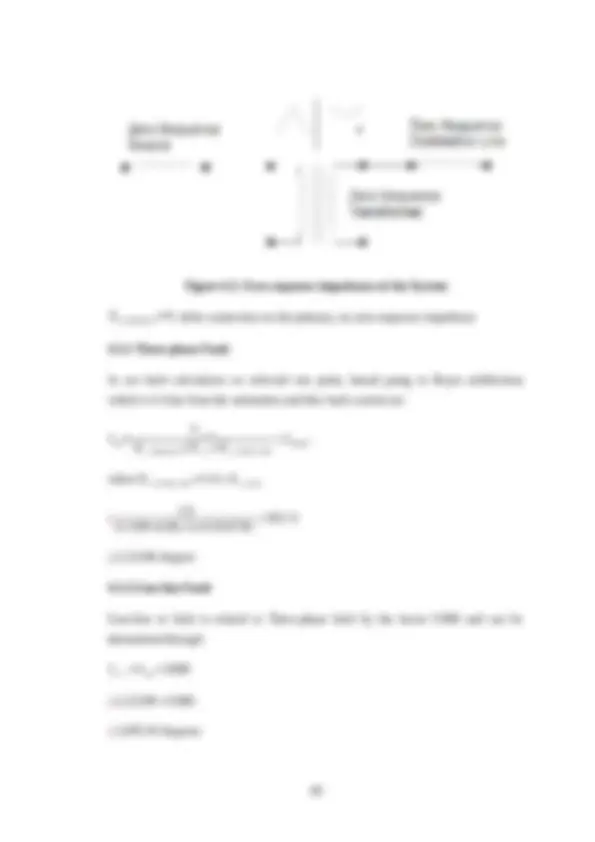

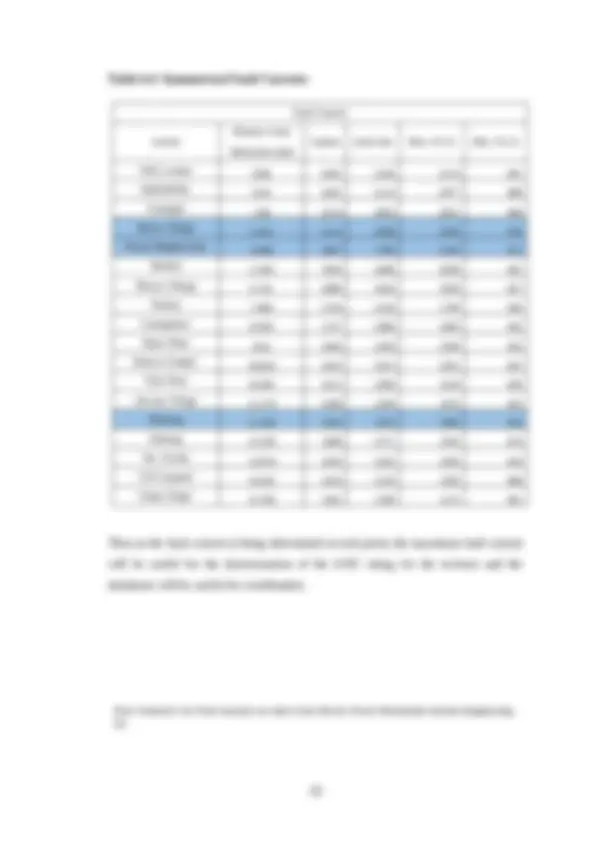

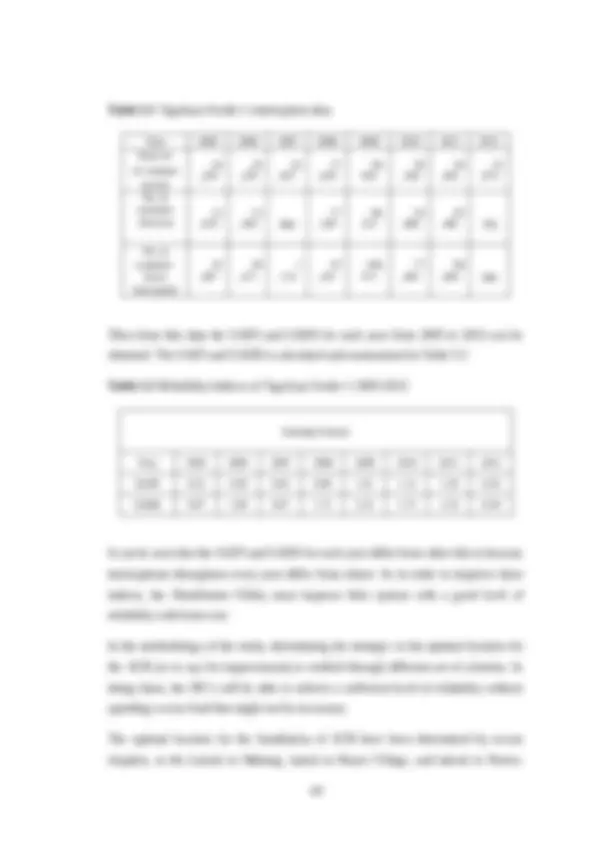
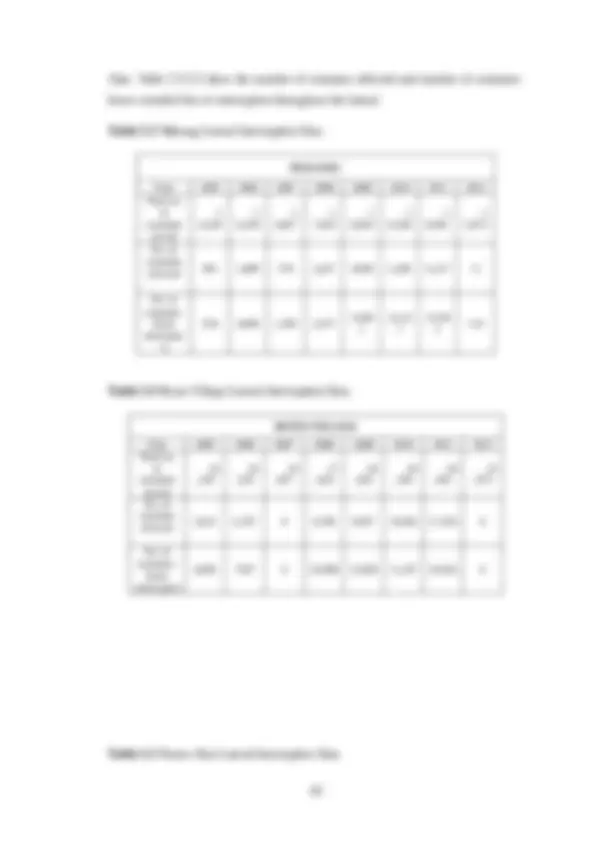
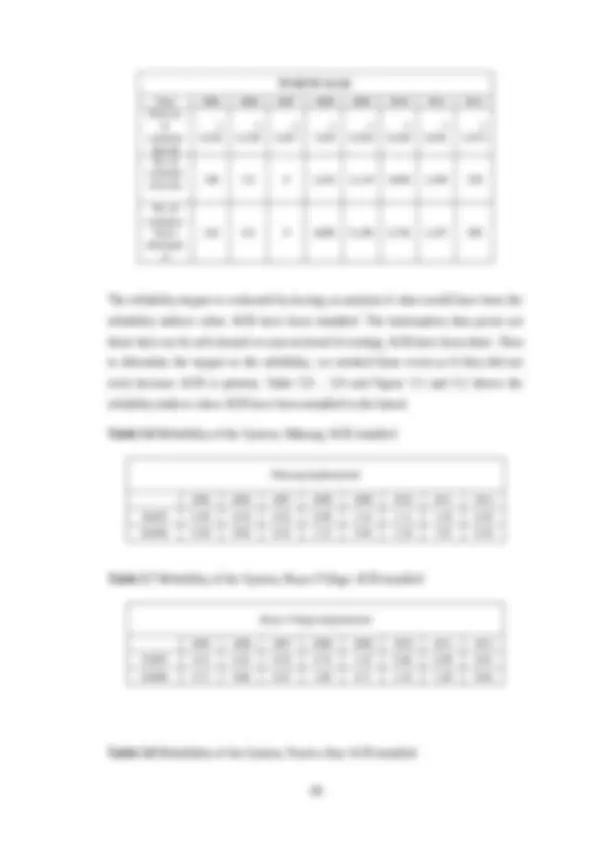
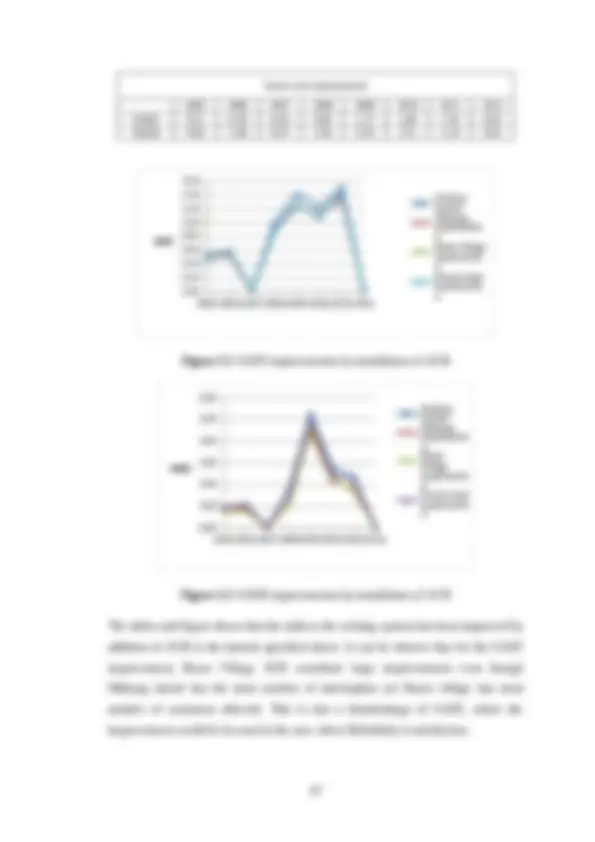
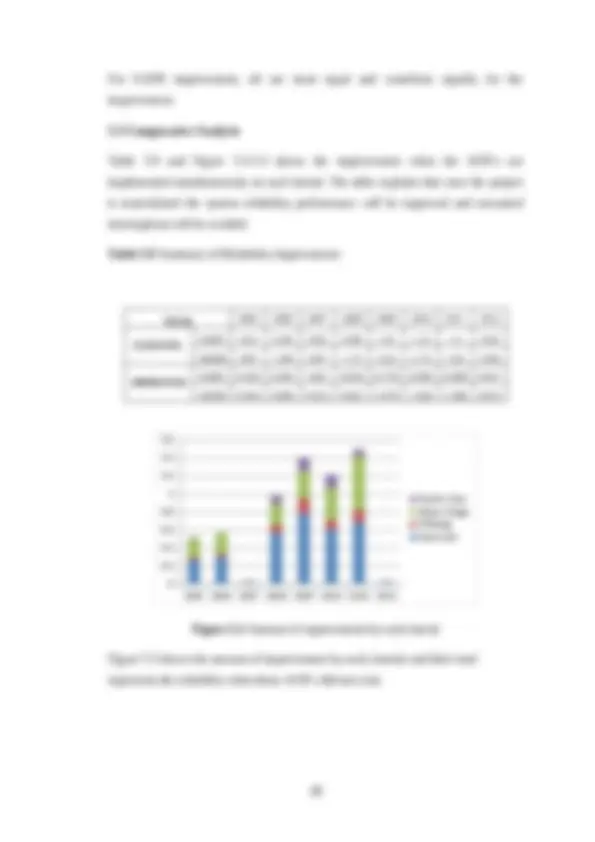
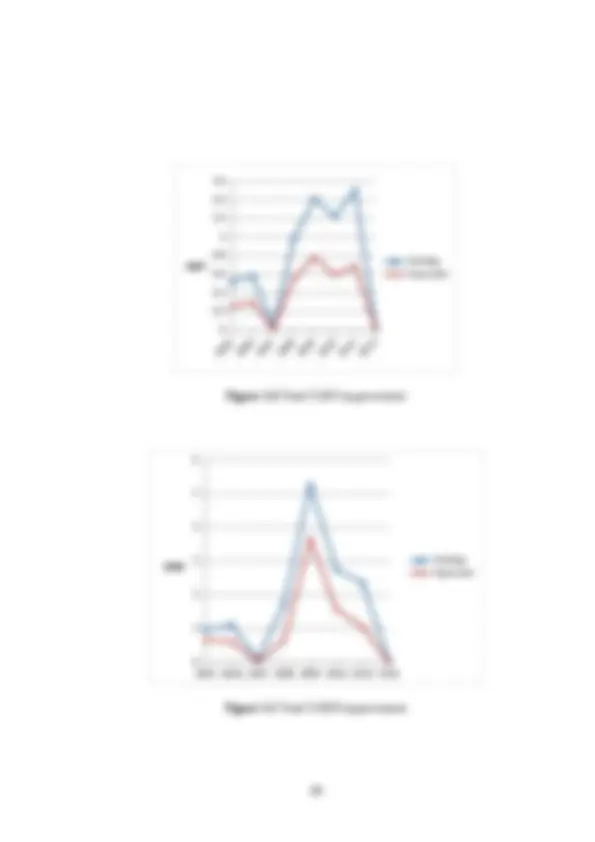
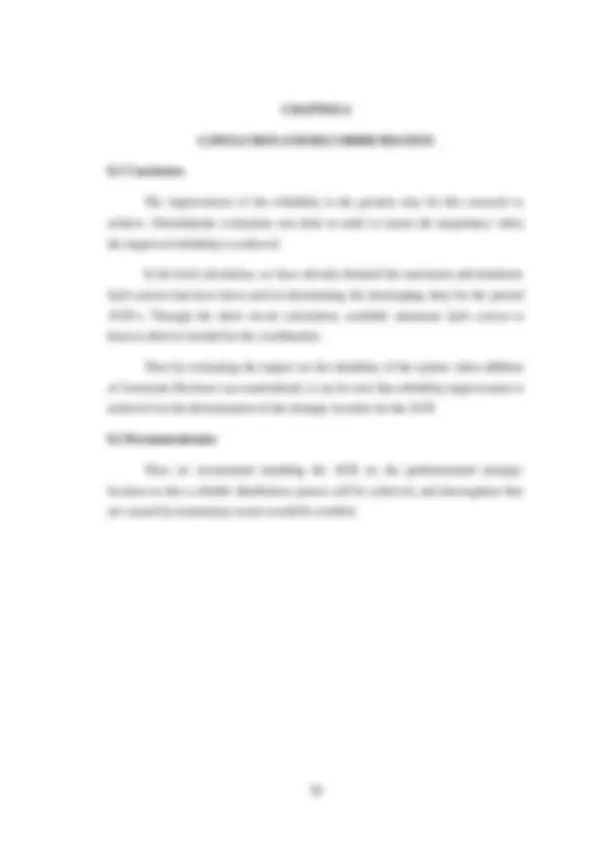



Study with the several resources on Docsity

Earn points by helping other students or get them with a premium plan


Prepare for your exams
Study with the several resources on Docsity

Earn points to download
Earn points by helping other students or get them with a premium plan
Community
Ask the community for help and clear up your study doubts
Discover the best universities in your country according to Docsity users
Free resources
Download our free guides on studying techniques, anxiety management strategies, and thesis advice from Docsity tutors
Improving the Reliability of the 34.5 kV 30 MVA Tango Feeder 1 of the Tagoloan Substation of CEPALCO - Fault Calculation and Reliability Evaluation
Typology: Thesis
1 / 51

This page cannot be seen from the preview
Don't miss anything!












































The 34.5kV Tagoloan substation feeder 1 circuit is highly prone to momentary
system faults. The author wishes to investigate the historical data of power
interruptions affecting the franchise area of CEPALCO. From this actual records
obtained via SCADA, the feeder mostly affected by these power outages are
established and analyzed. Short circuit fault calculations will be presented and system
protection coordination for an enhanced system reliability will be proposed.
Main backbone feeders are protected by circuit breakers located at the
substations. Lateral lines supplying power to customers are connected to the main
feeder lines and protected via manual fuse-type circuit breakers. When system faults
occur lateral lines are disconnected from the system when fuse links are busted or
melted. Linemen will be dispatched to patrol the affected lines and after the system is
cleared from the cause of the fault, lateral lines are connected back to the main
feeders after replacing the busted fuse links.
The whole process of line patrol by linemen, manual clearing of faults and the
replacement of busted fuse-link type disconnecting means takes a considerable
amount of time. Single-line to ground faults mostly caused by vegetations and
adverse weather conditions like strong winds often causes power interruption at a
minimum of 30 minutes or more. With the installation of Automatic Circuit
Reclosers, clearing of faults will take place automatically with less human
intervention and a faulted line is restored in a maximum of 5 minutes if not within a
fraction of a second only. Continuity of power supplied to the customers is improved
and the reliability of the whole system of CEPALCO is improved.
1.1 Company Profile
In 1962, the company obtained a legislative franchise to serve Cagayan de Oro
City. Shortly thereafter, this franchise was expanded to cover the municipalities of
Tagoloan and Villanueva, where the 3,000 hectare PHIVIDEC Industrial Estate is
located, and Jasaan, all within the Province of Misamis Oriental.
To keep pace with the development of Northern Mindanao, CEPALCO
assumed its position as a growth catalyst by embarking on a long range plan to build
the Company, its facilities, manpower resources and expertise.
The Company’s electric utility operations history dates back to January 1952
when it generated its own power through a diesel generator rated at 400 kilowatts,
serving about 750 customers within Cagayan de Oro City through a 2.4 kilovolt
primary distribution system.
In 1967, CEPALCO laid the backbone of its distribution system by
constructing a 40 kilometer primary distribution line that spanned the distance from
NPC’s Carmen substation in Cagayan de Oro City up to the poblacion of Jasaan,
Misamis Oriental. This primary line was energized at 34.5 kV; it was the first that this
Voltage was used for distribution purposes in the Philippines. The new power line
served the increasing electrical requirements of Cagayan de Oro City and the
municipalities of Tagoloan, Villanueva and Jasaan.
The succeeding years saw CEPALCO undertake a massive expansion
program in its capacity and coverage both for urban and rural electrification.
Improvements in the Company’s distribution and service facilities were
implemented and the feeder lines were upgraded to take in higher voltages.
Power substations were constructed, and electric lines were extended from
the primary distribution line running along the national highway to all major
population centers within its franchise area. In the city, distribution lines were
extended to all commercial and residential sites.
Today, CEPALCO has become one of the most responsive and dependable
electric distribution companies in the country, equipped with modern facilities and an
efficient and reliable electric distribution service network. The Company’s
distribution system includes 138KV, 69KV, 34.5KV and 13.8KV facilities serving a
total customer base of over 120,000 with a power demand exceeding 146 megawatts.
CEPALCO now ranks as the fourth largest electric service company in the country.
1.2 Technical Description
CEPALCO purchases bulk electrical power at 138KV and 69KV from the
National Grid Corporation of the Philippines (NGCP), 69KV from (Mindanao Energy
Systems, Inc. (MINERGY), and 34.5kV from Bubunawan Power Corporation (BPC)
reliability would also mean additional cost, then intelligent placement or the strategic
location of protection device must be done to achieve reliability with the least
possible cost.
1.4 Objective of the Study
The main objective of this research is to improve the reliability of Tagoloan Feeder 1,
and this can be achieved by following:
To analyze the 8 year historical data of power interruption from the System
Operation Department to find out the feeder mostly affected by power
interruptions.
To determine the strategic location that can be identified by the criteria
(frequency, number of customer affected, number of connected load) to which
the ACR will be installed.
To calculate for the maximum and minimum fault current to any point on
Tagoloan feeder 1, to identify the interrupting capacity of ACR’s
To evaluate the reliability of the system when ACR would have been present
on the strategic locations of the system.
1.5 Scope and Limitations
1.5.1 The reliability improvement research will be limited within the Tango
Feeder 1 of the Tagoloan substation only. This covers the feeder circuit
from the Tagoloan substation located within Tagoloan proper down to
the Almirante-Shell gasoline station at the junction of Recto Avenue,
Lapasan and Agora road.
1.5.2 The research will be confined to transient and momentary power
interruptions only. Sustained power interruptions will not be the concern
of our study since this type of interruptions can no longer be solve
through auto reclosing and is characterized by a permanent fault, such as
cut lines, broken poles or trees falling on the feeders lines and equipment
damage, which needs repair for longer periods for normal operations to
continue. Sustained power interruptions will most likely be addressed by
the customers via operating their own generators and will be outside the
scope of this reliability research. The study will be limited to momentary
interruptions only which can self-reclose or clear itself without manual
intervention or the need for repairs after the installation of protection
equipments.
1.5.3 A majority of momentary power interruptions involved in the study is
characterized by a single-line to ground fault caused by vegetations and
animals such as birds and snakes coming into contact with the feeder
lines. Also, unknown causes most likely attributed to strong winds and
lightning during adverse weather conditions contributes to the major
cause of disturbance. The study will be confined to these identified
causes of momentary interruptions only.
1.6 Significance of the Study
Through the installation of Automatic Circuit Reclosers or ACR at optimal
locations within the Tango Feeder 1 of the Tagoloan substation, unnecessary outages
such as momentary interruption can be reduced whereby improving the reliability of
the system.
that the 3phase fault especially ( 1 ) where the associated generators have solidly
grounded neutrals or low-impedance neutral impedances, and (2) on the wye-
grounded side of delta-wye grounded transformer banks. Therefore, for a given
system, each fault at each fault location must be calculated based on actual circuit
conditions. When this is done it is usually the case that the SLG fault is the most
severe, with the 3phase , 2 LG, and L-L following in that order. In general, since the
2 LG fault value is always somewhere in between the maximum and minimum, it is
usually neglected in the distribution system fault calculations.
In general, the maximum and minimum fault currents are both calculated for a given
distribution system. The maximum fault current is calculated based on the following
assumptions:
Whereas the minimum current is calculated based on the following assumptions:
somewhere between 30 and 40 ohms.
In general, these fault currents are calculated for each sectionalizing point,
including the substation, and for the ends of the longest sections. The calculated
maximum fault-current values are used in determining the required interrupting
capacities (i.e., ratings) of the fuses, circuit breakers, or other fault-clearing apparatus;
the calculated minimum fault-current values are used in coordinating the operations of
fuses, reclosers, and relays.
To calculate the fault currents one has to determine the zero-, positive-, and negative-
sequence Thevenin impedances of the system] at the high-voltage side of the
distribution substation transformer looking into the system. These impedances are
usually readily available from transmission system fault studies. Therefore, for any
given fault on a radial distribution circuit, one can simply add the appropriate
impedances to the Thevenin impedances as the fault is moved away from the
substation along the circuit. The most common types of distribution substation
transformer connections are (1) delta-wye solidly grounded and (2) delta-delta [5].
2.1.1 Three-phase faults
Since this fault type is completely balanced, there are no zero- or negative-sequence
currents. Therefore, when there is no fault impedance,
f , 3 ∅
f ,a
f ,b
f , c
L − N
1
; Ampere
Where
f , 3 ∅
= three phase fault current,A
L − N
= line ¿ neutral distribution voltage , V
1
= total positive − sequenceimpedance , ohms
Since the total positive-sequence impedance can be expressed as
1
1 , sys
1 ,T
1 , LINE
Where
1 , sys
positive-sequence Thevenin-equivalent impedance of the system (or
source) referred to distribution voltage.
1 , T
1 , T
2.1.2 Line-to-Line Faults
Assume that a line-to-line fault exists between phase’s b and c. Therefore, if there is
no fault impedance,
f , L − L
√
f , 3 ∅
f , 3 ∅
The equations derived in this section are applicable whether the source connection is
wye-grounded or delta.
2.1.3 Single-Line-to-Ground Fault
Assume that a single line-to-ground fault exists on phase a. If there is fault
impedance,
f , L − G
L − N
[
1
0
]
f
Where Z 0
= total zero-sequence impedance
2.2 Interruption Causes
The normal current rating of overhead lines is often limited by ground
clearances. As temperature increases, conductors will elongate based on their
coefficients of thermal expansion. This expansion will cause lower sags, increase the
likelihood of phase conductor contact, and may result in unsafe clearances. Due to
thermal inertia, conductor sag will not occur instantaneously. Typical lines have
thermal time constants between 5 and 20 minutes, allowing temporary overloading
without sag concerns.
2.2.3 Animals
Animals are one the largest causes of customer interruptions for nearly every
electric utility. Problems and mitigation techniques are as varied as the animals
involved [Richard Brown]. These animals climb on certain pieces of equipment, such
as transformers and fuses, causing the equipment to shut down. By shutting down, the
equipment protects the rest of the system.
2.2.4 Vegetations
Trees are one of the top three causes of customer interruptions for most utilities
(animals and lightning being the other two). Several modes of failure associated with
trees include:
Mechanical damage to overhead conductors when struck by a falling trunk or
branch.
Faults caused by animals that use trees as a gateway to electrical poles.
Faults caused when growing branches push two conductors together.
Faults caused when wind blows branches into conductors, resulting in two
wires contacting each other.
Faults caused when a branch falls across two conductors.
A freshly cut tree branch will not cause a fault if it is placed across two
distribution phase conductors. The resistance of the branch typically limits current
flow to several amps. Similarly, a desiccated branch will not cause a fault if it is
placed across two distribution phase conductors because its resistance is even higher.
Regardless, faults often but not always occur after a branch falls across two
conductors. Understanding the physics responsible for determining whether a fault
occurs or not is important and can help when making tree-related distribution
reliability decisions.
When a branch breaks off of a tree and bridges two conductors, a fault does not
occur immediately because a moist tree branch has a substantial resistance. Even
though a fault has not immediately occurred, the following two processes initiate: (1)
a small current begins to flow and starts to dry out the wood fibers, and (2) the electric
field initiates carbonization of cellulose near each conductor.
Figure 2.1 When a branch of tree causes fault.
2.3 Types of Outages
Most of the following definitions of terms for reporting and analyzing outages of
electrical distribution facilities and interruptions are taken from Ref. 1 and included
here by permission of the Institute of Electrical and Electronics Engineers, Inc.
Outage - Describes the state of a component when it is not available to perform its
intended function due to some event directly associated with that component. An
outage may or may not cause an interruption of service to consumers depending on
system configuration.
Forced outage - An outage caused by emergency conditions directly associated with a
component that require the component to be taken out of service immediately, either
automatically or as soon as switching operations can be performed, or an outage
caused by improper operation of equipment or human error.
Scheduled outage - An outage that results when a component is deliberately taken out
of service at a selected time, usua11y for purposes of construction, preventive
maintenance, or repair. The key test to determine if an outage should be classified as
forced or scheduled is as follows. If it is possible to defer the outage when such
deferment is desirable, the outage is a scheduled outage; otherwise,
The outage is a forced outage. Deferring an outage may be desirable, for example, to
prevent overload of facilities or an interruption of service to consumers.
Partial outage - Describes a component state where the capacity of the component to
perform its function is reduced but not completely eliminated
2.4 System Protection
The use of symmetrical ratings simplified the selection of cutouts as a simple
comparison of the calculated system requirements with the available fuse cutouts
ratings. In spite of that, fuse cutouts still have to be able to interrupt asymmetrical
currents which are, in turn subject X/R ratios of the circuit. Therefore symmetrical
cutouts rating tables are prepared on the basis of assumed maximum X/R ratios.
Figure 2.2 typical fuse links used on outdoor distribution: (a) fuse link rated less than
10A, and (b) fuse links rated 10-100A. (S & C Electric Company)
Furthermore, the standards also classify the fuse links as (1) type K (fast) and
(2) type T (slow). The difference between these two fuse links is the relative melting
time which is defined by the speed ratio as
Speed Ratio =
melting current at 0.1 s
melting current at 300 ∨ 600 s
Here, the 0.1s and 300s are for the fuse links rated 6 t0 100 A, and the 0.1 and
600s and for fuse links rated 140 to 200A. Therefore the speed ratios for type K to
type T fuse links are between 6 and 8, and 10 and 13, respectively
2.4.2 Automatic Circuit Recloser
The automatic circuit recloser is an overcurrent protective device that
automatically trips and recloses a preset number of times to clear temporary faults or
isolate permanent faults. It also has provisions for manually opening and reclosing the
circuit that is connected. Recloser can be set for a number of different operation
sequences such as (1) two instantaneous (trip and reclose) operations followed by two
time delay trips operations prior to lockout, (2) one instantaneous plus three time
delay operations (3) three instantaneous plus one time delay operations, (3) three
instantaneous plus one time delay operations, (4) four instantaneous operations, or (5)
four time-delay operations. The instantaneous and time-delay characteristics of a
recloser are functions of its ratings. Recloser ratings range from 5 to 1120 A for the
ones with series coils and from 100 to 2240 A for the ones with non-series coils. The
minimum pick-up for all rating is usually set to trip instantaneously at two times the
current rating. The recloser must be able to interrupts asymmetrical faults current
related to their symmetrical rating. The rms asymmetrical current ratings can be
determined by multiplying the symmetrical ratings by the asymmetrical factors, from
the table 2.1, corresponding to the specified X/R circuit ratio. Note that the
asymmetrical factors given in table 2.1 are the ratios to the asymmetrical to the
symmetrical rms fault currents at 0.5 cycle after fault initiation for different for circuit
X/R ratios.
Table 2.1 Asymmetrical Factors as function of X/R ratios
X/R
Asymmetrica
l
Factor
2 1.
4 1.
8 1.
10 1.
12 1.
14 1.
25 1.
A generally accepted rule of thumb is to assume that the X/R ratios on distributions
feeder are not to surpass 5 and therefore the corresponding asymmetry factor is to be
about 1.25. However, the asymmetry factor for the other parts of the system is
assumed to be approximately 1.6.
Contrary to expulsion-type fuses, a sectionalizer provides coordination (with
out inserting an additional time-current coordination) with the backup devices
associated with very high fault currents and consequently provides an additional
sectionalizing point on the circuit. On overhead distribution systems, they are usually
installed on poles or crossarms. The application of sectionalizers entails certain
requirements:
reclosers.
the end of the sectionalizer's protective zone.
the sectionalizer.
ratings be exceeded.
located ahead of a sectionalizer toward the source, the first and second backup
devices should be set for four and three tripping operations, respectively, and the
sectionalizer should be set to open during the second dead circuit time for a fault
beyond the sectionalizer.
a backup protective device that is close to the source, the backup device should be set
to lockout after the fourth operation, and the first and second sectionalizers should be
set to open following the third and second counting operations, respectively.
The standard continuous current ratings for the line sectionalizers range from
10 to 600 A. Figure 2.4 shows typical three-phase automatic line sectionalizers.
Figure 2.4 Typical three-phase automatic line sectionalizers: type GH.
2.4.4 Automatic Circuit Breakers
Circuit breakers are automatic interrupting devices which are capable of breaking
and reclosing a circuit under all conditions, i.e., faulted or normal operating
conditions. The primary task of a circuit breaker is to extinguish the arc that develops
due to separation of its contacts in an arc-extinguishing medium, for example, in air,
as is the case for air circuit breakers, in oil, as is the case for oil circuit breakers
(OCBs), in SF 6
(sulfur hexafluoride) or in vacuum. In some types, the arc is
extinguished by a blast of compressed air, as is the case for magnetic blow-out circuit
breakers.
Oil circuit breakers controlled by protective relays are usually installed at the
source substations to provide protection against faults on distribution feeders. Oil
circuit breakers controlled by protective relays are usually installed at the source
substations to provide protection against faults on distribution feeders.
Protective relays receive information about the system and send signals for circuit
breakers to open and close when appropriate. Older relays are based on
electromechanical principles (e.g., the spinning of a disc or the movement of a
plunger) but most modern relays are based on digital electronics.
Overcurrent relays send trip signals when high currents (typically caused by
faults) are sensed. Instantaneous relays send this signal without any intentional delay.
Time overcurrent relays send a signal that is delayed longer for lower currents,
allowing breakers in a series to be coordinated. Delay versus current for each device
is characterized by a time current curve (TCC).
Differential relays send a trip signal if the current flowing into a zone is not
equal to current flowing out of a zone. Common applications include transformer
differential protection and bus differential protection.
competitive, and this can lead to difficult managerial decisions at both the planning
and operating phases [1].
2.5.1 Reliability Evaluation
Power system engineers and planners have always been conscious of the need
for better reliability assessment procedures. The techniques first used in practical
application were deterministic in nature and some of these are still in use today.
Although deterministic techniques were developed in order to combat and reduce the
effects of random failures on a system, these techniques did not and cannot account
for the probabilistic or stochastic nature of system behavior, of customer demands and
of component failures.
The analytical techniques are highly developed and have been used in practical
applications for many years. Analytical techniques represent the system by
mathematical models and evaluate the reliability indices from these models using
mathematical solutions. The exact mathematical equations can become quite
complicated and approximations may be required when the system is complicated. A
range of approximate techniques therefore has been developed to simplify the
required calculations. Analytical techniques are generally used to evaluate the mean
or expected values of the load point and system reliability indices. The mean values
are extremely useful and are the primary indices of system adequacy in distribution
system reliability evaluation. The mean values have been used for many years to
assist power system planners to make planning and operation decisions.
A mean value, however, does not provide any information on the variability of the
reliability index. The probability distributions of the index, however, provide both a
pictorial representation of the way the parameter varies and important information on
significant outcomes, which, although they occur very infrequently, can have very
serious system effects. These effects, which can easily occur in real life, may be
neglected if only average values are available. Probability distributions of the relevant
reliability indices can be important for industrial customers with critical processes or
commercial customers with nonlinear cost functions [7].
2.5.2 Reliability Indices
Reliability indices are statistical aggregations of reliability data for a well
defined set of loads, components, or customers. Most reliability indices are average
values of a particular reliability characteristic for an entire system, operating region,
substation service territory, or feeder [6].
Past performance statistics provide valuable reliability profile of the existing system.
However, distribution planning involves the analysis of future systems and evaluation
of system reliability when there are changes in; configuration, operation conditions or
in protection schemes. This estimates the future performance of the system based on
system topology and failure data of the components. Due to stochastic nature of
failure occurrence and outage duration, it is generally based on probabilistic models.
The basic indices associated with system load points are; failure rate, average outage
duration and annual unavailability [7].
2.5.2.1 Basic Load point indices
The three basic load point reliability indices usually used are the average failure rate
λ, the average outage time r and the average annual unavailability or average annual
outage time U. It should be noted that these indices are not deterministic values but
are expected values of an underlying probability distribution and hence are long-run
average values.
2.5.2.2 Basic System Indices
The three primary load point indices are fundamentally important parameters. They
can be aggregated to provide an appreciation of the system performance using a series
of system indices. The additional indices that are most commonly used [1] are defined
in the following sections.
Customer-Oriented Indices
(i) System average interruption frequency index, SAIFI
total number of customer interruption
total number of customer served
λ
i
i
i
where λ i
is the failure rate and N i
is the number of customer at load point i.
(ii) System average interruption duration index, SAIDI
of customer interruption duration
total number of customers served
i
i
i
(iii) Average service availability (unavailability) index, ASAI (ASUI)